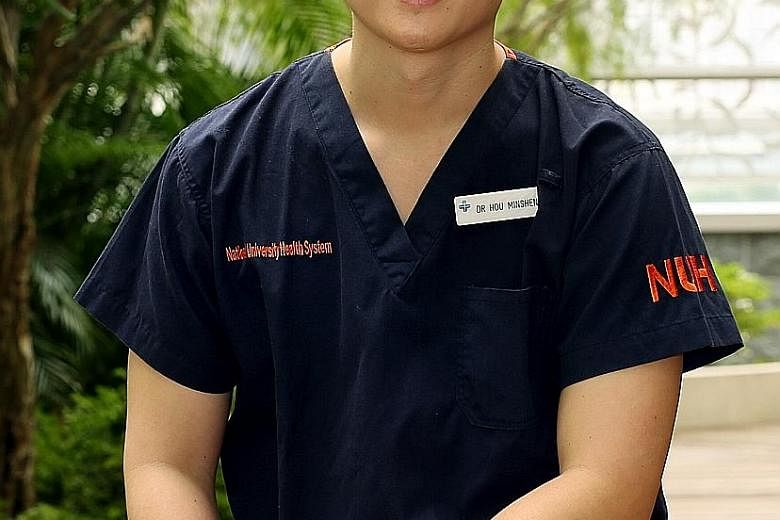In his early years of medical school, Dr Hou Minsheng, 30, aspired to work in a hospital's emergency department.
But over time, his interests veered towards family medicine. Instead of treating patients' immediate problems, he wanted to make a long-term impacton their lives. "At first, I was keen on the speed and adrenaline rush of emergency medicine. But over the years, my convictions changed," he said.
Now, Dr Hou is in the third year of his family medicine training at the National University Hospital, and will graduate next July.
Family medicine is a discipline that does not focus on any organ or body part. Instead, doctors are trained to treat patients as a whole. This all-encompassing reach means that Dr Hou has to go through 13 major rotations over three years.
These stints - which can range from one month in the ophthalmology department to six weeks in children's emergency - will give him a broad overview of all the things that a family medicine doctor needs to know. He also spends time at polyclinics once a week, on top of conducting home visits and attending to patients in nursing homes.
"One moment I could be seeing a newborn with jaundice; another moment it could be an 80-year-old grandmother with dementia," he said.
And when the need arises, he refers patients to the appropriate specialists.
"It can be challenging to know everything in detail and... that's what the three years are for," Dr Hou said. "We try to learn the ropes as best as we can."


